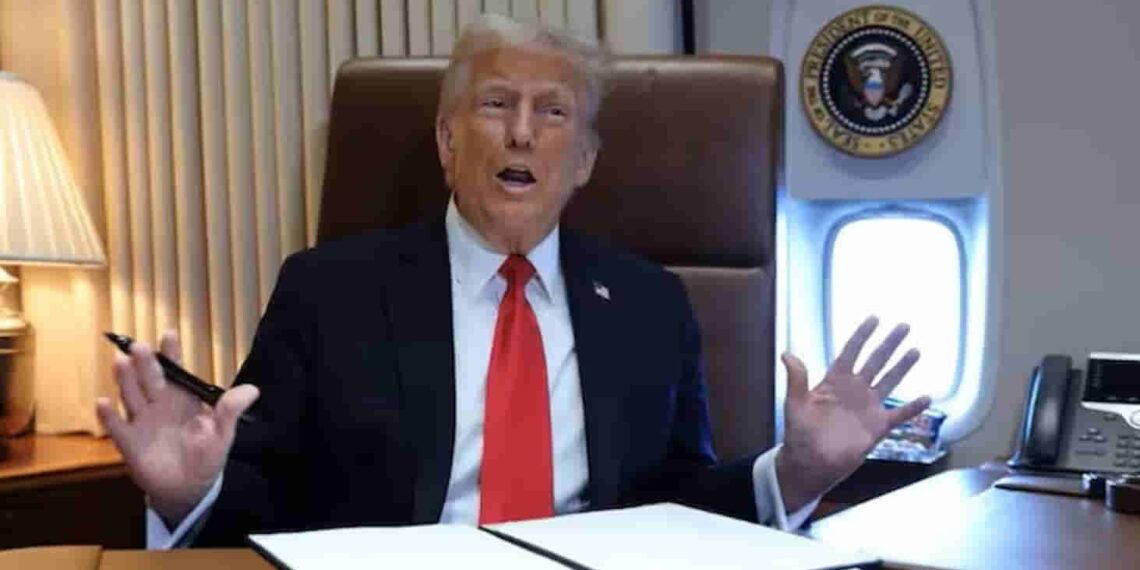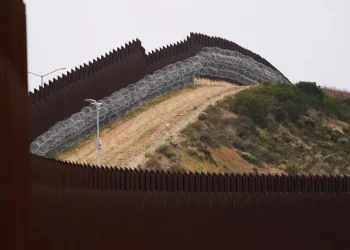Trump Announces Plans for New Trade Tariffs, Targeting Steel and Aluminum Imports
President Donald Trump has announced plans to impose a 25% tariff on all steel and aluminum imports into the United States, with Canada expected to be the most affected.
Tariffs on Steel and Aluminum Imports
Speaking to reporters aboard Air Force One while traveling to the Super Bowl in New Orleans on Sunday, Trump confirmed his decision to introduce new tariffs.
“Any steel coming into the United States is going to have a 25% tariff,” he stated.
Trump also hinted at upcoming reciprocal tariffs on all countries that impose taxes on U.S. imports, though he did not specify which nations would be targeted or if exemptions would be made.
“If they charge us, we charge them,” he declared.
Impact on Canada and Global Markets
Canada, the U.S.’s largest supplier of aluminum and one of its biggest steel trading partners, is expected to face the most significant economic impact from the new tariffs.
Doug Ford, Premier of Ontario—where much of Canada’s steel production is concentrated—criticized the move, calling it “shifting goalposts and constant chaos, putting our economy at risk.”
South Korea, another major steel exporter to the U.S., also felt the impact. Stocks of major South Korean steel and auto companies dropped sharply following Trump’s announcement:
- POSCO Holdings fell by 3.6%
- Hyundai Steel dropped 2.9%
- Kia Corp shares declined 3.6%
Tariffs: A Key Part of Trump’s Economic Vision
Trump has long promoted tariffs as a way to strengthen the U.S. economy, protect American jobs, and generate tax revenue.
During his first term, he imposed 25% tariffs on steel imports and 10% on aluminum imports from Canada, Mexico, and the European Union. However, a deal was later reached with Canada and Mexico to remove those tariffs, while EU tariffs remained in place until 2021.
Now, with his new round of tariffs, Trump is doubling down on his trade strategy.
Escalation of Trade Tensions
Trump’s new tariffs mark another major escalation in global trade policy. Earlier this month, he threatened a 25% import tax on Canadian and Mexican products but later delayed the decision for 30 days following discussions with both nations’ leaders.
Additionally, he recently introduced 10% tariffs on all Chinese goods entering the U.S., prompting Beijing to retaliate with its own countermeasures.
Trump also confirmed that more trade measures would be announced within days, stating:
“On Tuesday or Wednesday, we will have more reciprocal tariffs, and they will take effect almost immediately.”
Trump’s Controversial Comments on Canada and Gaza
In addition to his trade announcements, Trump repeated his previous controversial remarks about potentially taking over Canada and Gaza.
- Canada: Trump suggested that Canada would be better off as the “51st state” of the U.S.
- Gaza: He reiterated his intention to “buy and own Gaza”, referring to the region as a “real estate site” with potential for redevelopment.
These comments have drawn widespread criticism and skepticism from political leaders and international analysts.
Renaming the Gulf of Mexico?
During his trip to New Orleans, Trump also signed a proclamation declaring February 9 as “Gulf of America Day,” celebrating his order to rename the Gulf of Mexico.
Mexico quickly rejected the idea, stating that UN maritime rules prohibit any single country from unilaterally changing international water names.
Meeting with Putin? Trump Stays Vague
When asked about any recent conversations with Russian President Vladimir Putin, Trump remained evasive:
“I don’t want to talk about it, and if we are talking, I don’t want to tell you about it too early. But I do believe we’re making progress.”
He added that he expects to meet Putin “at the right time” in the future.
What’s Next?
With new tariffs set to be rolled out in the coming days, global markets are bracing for potential economic repercussions. Trade partners, including Canada, Mexico, and South Korea, are expected to push back, while China has already retaliated with its own tariffs.
Trump’s latest bold and controversial trade decisions signal that his economic strategy remains centered on tariffs and aggressive trade policies. The coming weeks will determine how other nations respond and whether a new trade war is on the horizon.
This article was rewritten by JournosNews.com based on verified reporting from trusted sources. The content has been independently reviewed, fact-checked, and edited for accuracy, neutrality, tone, and global readability in accordance with Google News and AdSense standards.
All opinions, quotes, or statements from contributors, experts, or sourced organizations do not necessarily reflect the views of JournosNews.com. JournosNews.com maintains full editorial independence from any external funders, sponsors, or organizations.
Stay informed with JournosNews.com — your trusted source for verified global reporting and in-depth analysis. Follow us on Google News, BlueSky, and X for real-time updates.














